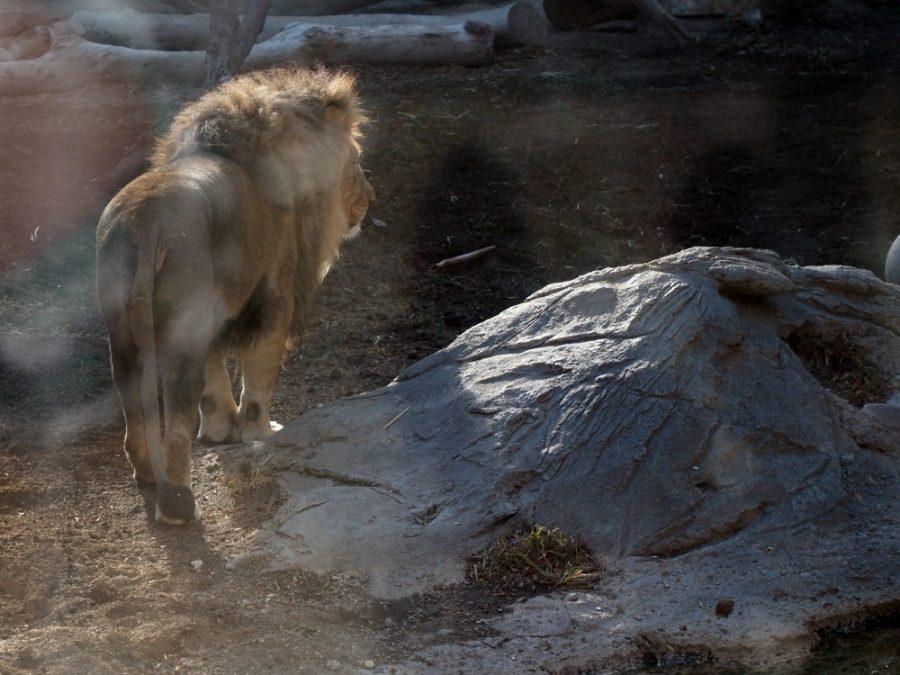There’s more that meets the eye behind the scenes at the Reid Park Zoo. From display, you’d never know that Shombay, one of the lions at the zoo, was once fighting for his life.
Approximately two years ago, Shombay was diagnosed with polycystic kidney disease. At just the age of 5, he suffered from kidney failure.
“It’s a congenital condition where his kidney’s were not formed correctly,” said the zoo veterinarian, Alexis Moreno. “So, they have big water bubbles on them basically.”
The disease makes it unable for him to flush the toxins out of his body like a normal animal is capable of doing, Moreno said. Before he was diagnosed, he was in a critical state weighing in at 350 pounds. The average weight for a lion is 450 pounds.
Shombay’s condition is not curable, but there are ways to keep it under control, which is what his zoo keepers and veterinarian have done.
Over the last six months, they began giving Shombay subcutaneous fluids to help flush all of the toxins out through his kidneys, since his kidneys cannot do that on their own. These fluids are delivered under the lion’s skin with an IV.
RELATED: The annual Zoo Lights event season returns to Reid Park Zoo
Twice a week, Shombay voluntarily receives the subcutaneous fluids. This was not a procedure that happened over night, though—it was a slow and continuous process.
Before receiving any fluids, Shombay’s zoo keeper, Alec Young, had to train him to become willing to receive the fluids through an IV.
“At first, we had to train him first to just lay down next to the fence and get him used to the idea of ‘Someone’s going to touch you,’” Young said.
This process continued for the next couple of weeks. Once Shombay was trained to lay next to the gate and get poked by his zoo keeper, they were able to start the next step.
Young said the next step in the process was to poke Shombay with a sharper object, one that felt more like a needle. Within a month, the staff was able to stick him with a needle.
“About another month after that, we were able to get a liter of fluid into him,” Young said.
RELATED: Reid Park Zoo announces partnership with UA vet school
After each task, Shombay was positively rewarded with a treat and the blow of a whistle to assure him he was making progress. This was a milestone for the staff and the lion because Shombay is not a fan of the veterinarian on staff.
The bond between Shombay and his zoo keeper is what makes this process possible—more importantly, it’s keeping him alive. This entire process is voluntary—if Shombay decides he no longer wants to receive fluids for the day, then he will get up and walk away from the fence and the zoo keepers will stop the process for the day.
“Six milliliters was the first amount of fluid that we put in,” Young said.
Since this has been a continual process, they have now been able to get him to receive up to two liters. Their goal is to reach the entire five-liter bag.
Shombay does not just receive subcutaneous fluids—he also takes a slew of other medications. He also receives “bloodcicles,” which are a lion’s version of popsicles. This daily treat encourages him to drink more water, according to Young.
Due to this weekly process, Shombay currently shows no symptoms of polycystic kidney disease. Although it is not curable, the fluids and never-ending care the staff has given him has greatly increased his health. Luckily, he still gets to roam around freely just as his mate and their daughter do.
Follow Brianna Lewis on Twitter.









